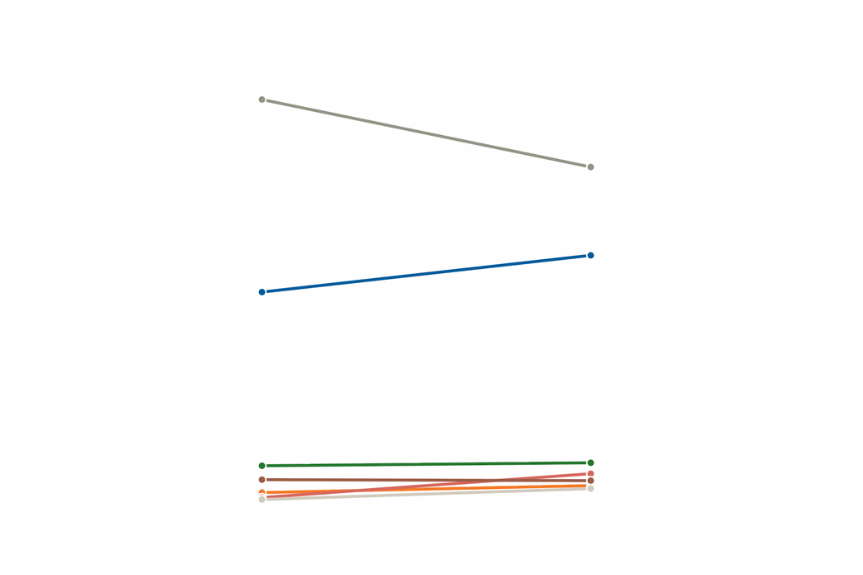Election Guide: Fujimori v. Humala in Peru's Runoff Vote
Election Guide: Fujimori v. Humala in Peru's Runoff Vote
AS/COA Online provides a guide to help understand the tight race between Keiko Fujimori and Ollanta Humala.
With just days to go before Peru’s second-round presidential election, polls continue to predict a neck-and-neck race between conservative Keiko Fujimori and leftwing nationalist Ollanta Humala. Pollsters Ipsos Apoyo suggested the final presidential debate on Sunday could break the gridlock. Some observers criticized the candidates, however, for attacking each other rather than focusing on the issues.
Both candidates have zeroed in on poverty reduction and social inclusion as their primary goals, but the two take different stances on economic policy. Fujimori advocates a continuation of Peru’s market-driven approach that she says will alleviate poverty by creating jobs, though she says she would also increase social spending and tax profits raked in by the mining companies operating in Peru.
Humala, on the other hand, favors a stronger redistributive role for the state. His opposition to Peru’s free trade agreement with the United States has led some to wonder whether he will continue his predecessors’ free-market policies that are credited with delivering Peru’s 7 percent average GDP growth since 2006. But Humala says he will respect existing trade agreements and instead focus on taxing foreign multinationals and stimulating national production. Other key issues for Peru’s electorate include crime and security, drug trafficking, and the construction of democratic institutions.
Most polls show Fujimori with a narrow lead over Humala going into the final week. Still, with a large portion of voters undecided, the June 5 runoff vote could go either way. AS/COA Online offers a collection of resources to help understand the candidates and the issues in Peru’s 2011 runoff presidential election.
Topics:
- The Candidates
- Polls
- News and Analysis
- Presidential Debate
- Election Resources
- Social Media Resources
- Keiko Fujimori (Fuerza 2011). See Fujimori’s political plan, in which she describes her strategy of sharing economic growth to reduce poverty, reforming government institutions, and cracking down on crime and drug trafficking in her political plan.
- Keiko Fujimori discusses the differences between her political philosophy and that of her authoritarian father Alberto, her performance as a congresswoman, and her positions on human rights in an interview with Terra.
- Ollanta Humala (Gana Perú). Read Ollanta Humala’s political plan, which proposes to expand local markets through industrialization, development of value-added industries, and the construction of a multicultural state.
- Ollanta Humala discusses his military background, his relationship with Latin America’s left, and his “neither left, nor right” nationalist philosophy with Terra. For English, see the translation at Latin America News Dispatch.
- To see how the candidates have fared in opinion polls, consult Ipsos Apoyo.
- Reuters Factbox summarizes a large portion of the last major polls (Pollsters cannot publish surveys in Peru during the last week before the election). All list Fujimori leading, but, in some cases, her lead is less than 1 percent.
- An Imasen poll published May 29 shows Humala ahead by 1.3 percent.
- An Ipsos Apoyo survey measuring voter intention and published by El Comercio on May 29 shows Fujimori ahead by 2 percent. But the incidence of blank votes hit 12 percent while undecided votes hit 8 percent.
- Peruvian daily El Comercio’s election coverage
- offers candidate profiles, ongoing news reports, and resources relevant to the election.
- La República’s elections coverage, including an electoral timeline.
- Living in Peru carried English-language news.
- Reuters’ Peru page offers the latest coverage, as well as multimedia, interviews, and poll coverage. Reuters Factboxes break down poll figures and other relevant information.
View the May 29 presidential debate in six parts on YouTube.
- Peru’s National Office of Electoral Processes, which announced its methods for clean, transparent electoral procedures.
- Consortium for Elections and Political Process Strengthening’s Election Guide page for Peru.
- European Union announcement of intentions to deploy an Election Observation Mission.
- Some 232 international observers will be present for the runoff, reports La República.
- @keikofujimori on Twitter.
- @LivinginPeru on Twitter.
- @Ollanta_HumalaT on Twitter.
- @pnacinoalistap on Twitter.
- @atoledomanrique on Twitter.
- Keiko Fujimori’s photostream on Flickr.
- Parido Nacionalista Peruano’s photostream on Flickr.








